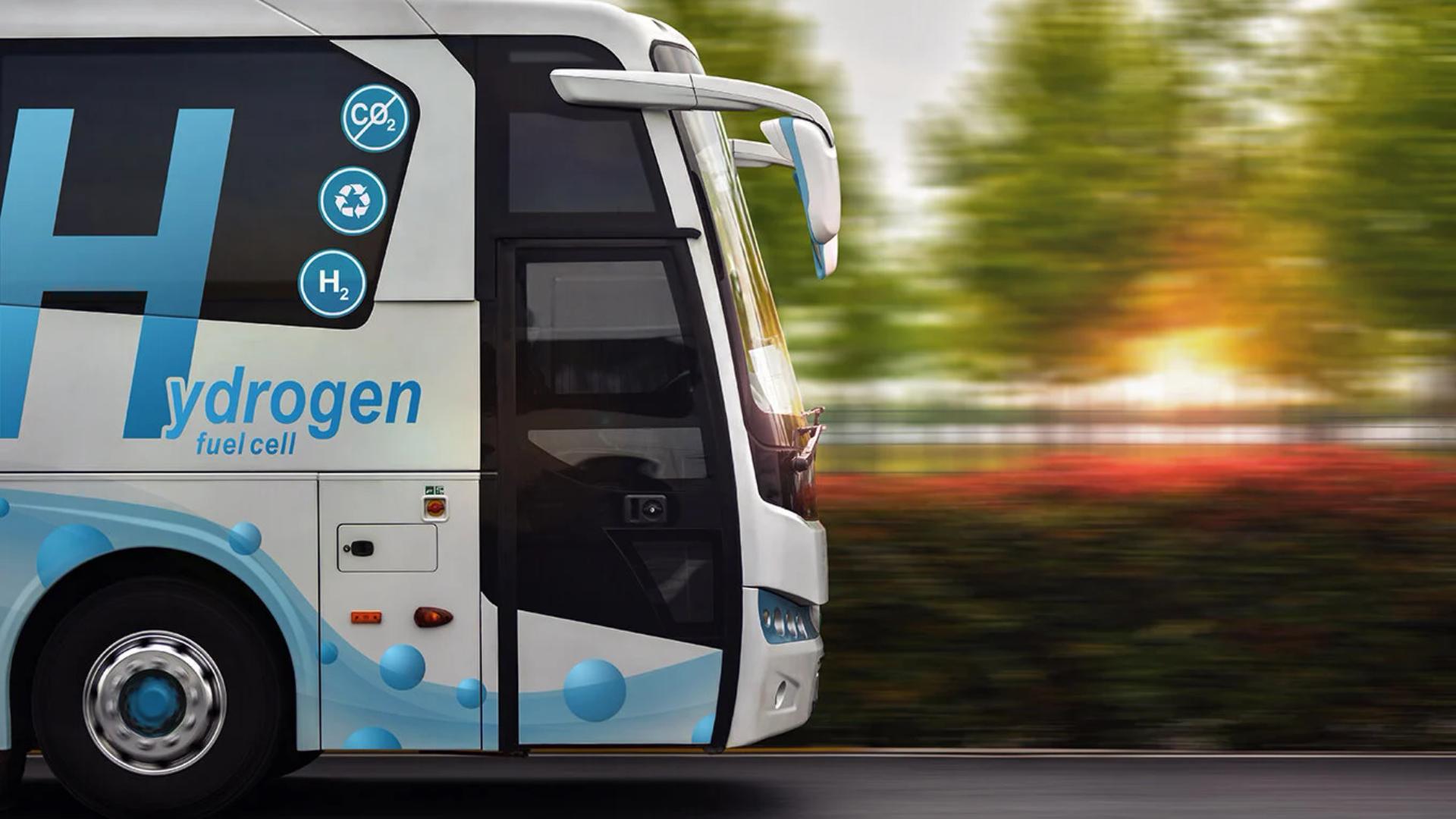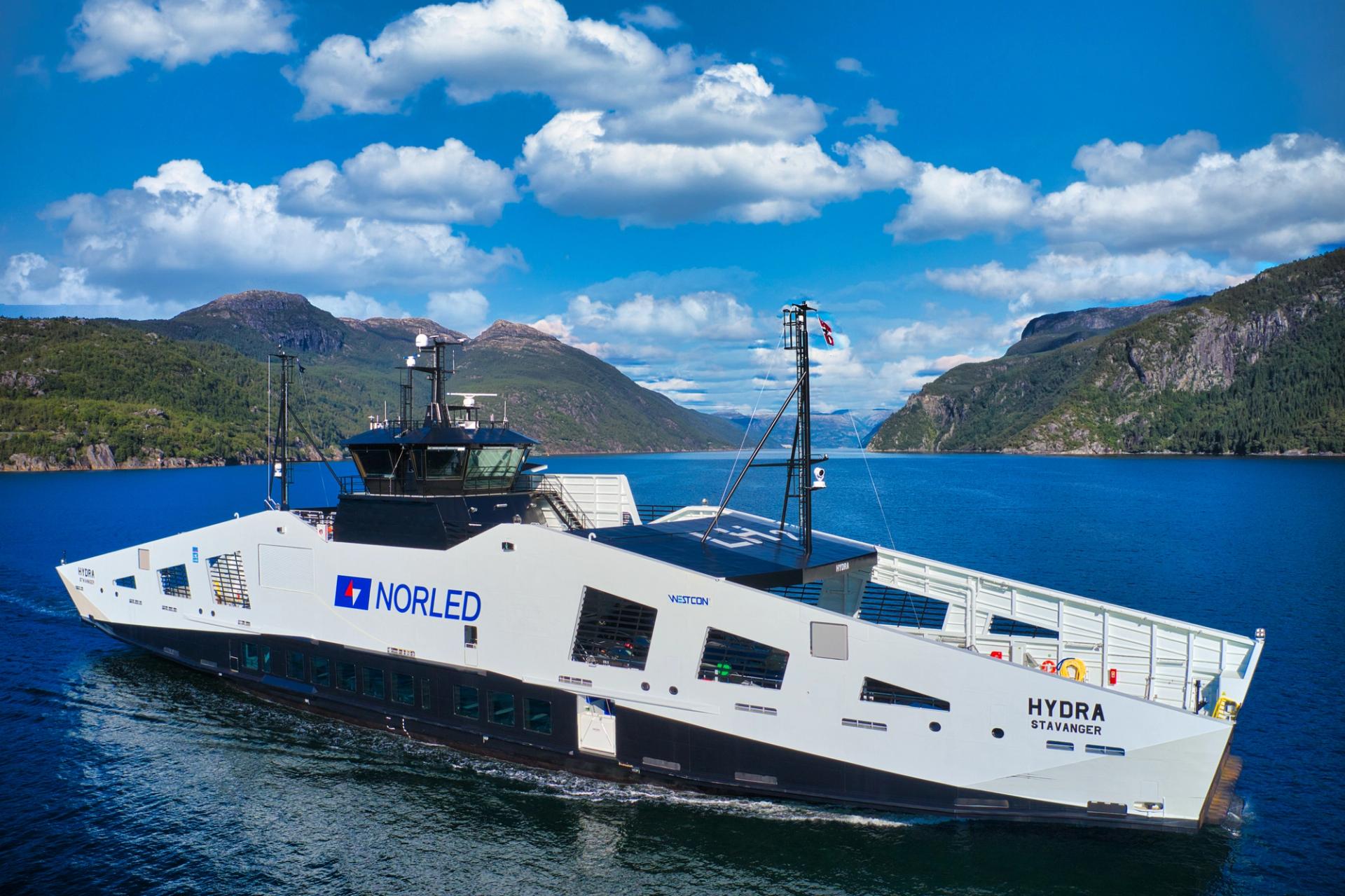

Norway is leading the race for green hydrogen
Published 15 Mar 2023 (updated 29 Oct 2025) · 5 min read
Green hydrogen represents a tremendous opportunity for growth. And few countries have a better head start than Norway.
“Choosing zero emissions needs to pay off.”
— Ingebjørg Wilhelmsen, Norwegian Hydrogen Forum
As a global energy powerhouse, Norway has everything it takes to make sure it does.
Despite impressive recent advancements in battery technology and renewables such as wind and solar power, these alone cannot reduce the greenhouse gas emissions from energy-intensive industry and transport.
Green hydrogen, which is renewable and emission free, is widely considered the most viable, cost-effective and environmentally sound solution to bring emissions from hard-to-abate sectors down to net zero. Now many companies and countries are vying for pole position in this nascent industry.
Critical clean energy
The winners in the maturing market will be those who have an existing competitive advantage and capacity to produce green hydrogen.
“Electricity is the most important cost factor in renewable hydrogen production,” explains Ingebjørg Telnes Wilhelmsen, Secretary General of the Norwegian Hydrogen Forum. That’s why she believes that a burgeoning hydrogen industry can build upon Norway’s strongest asset: its existing renewable energy capacity.
“Electricity is the most important cost factor in renewable hydrogen production.”
Ingebjørg Telnes Wilhelmsen
Secretary General, Norwegian Hydrogen Forum
For more than a century, Norway has been home to a hydropower industry producing abundant clean energy. “The fact that Norwegian electricity is produced using clean hydropower means its green hydrogen will contribute to a substantial reduction in CO₂ emissions in the various segments that use hydrogen,” says Wilhelmsen.
Innovative hydrogen companies and supplier ecosystems
Several Norwegian companies have already capitalised on this advantage to become international leaders in the field.
Nel, for example, is the world’s largest manufacturer of electrolysers. Hexagon Purus and Umoe Advanced Composites are leading suppliers of composite tanks, storage containers and transport solutions for hydrogen. Statkraft, Europe’s largest producer of renewable energy, has also invested heavily in hydrogen.
Moreover, a robust Norwegian supplier industry delivers a wide range of technologies and services to the global market. Of course, Norway’s position as an energy leader is also largely due to its oil and gas sector. But Wilhelmsen believes the extensive experience and expertise in energy systems and related infrastructure that Norway has amassed can be harnessed to drive the energy transition.
“In part, much of our energy expertise is the result of many years of working with oil and gas extraction,” she concedes.
“I completely understand that some only think ‘fossil fuel dinosaur’ when they hear Norway. But haven’t we all been? And now, just like many other countries, we are pushing hard for change,” she points out.

Hydrogen needs effective policies
The goal of zero-emission energy in Norway – and the targets of the Paris Agreement – will require effective policymaking.
Another hydrogen optimist is Knut Linnerud, former Cluster Manager for Arena H2 Cluster and current CEO of the green energy developer Greenstat. Linnerud acknowledges the scale of the challenges at hand, but points to Norway’s previous energy transformations as grounds for confidence:
“This transition for Norway as an energy nation will likely be just as demanding as when Norway first developed its hydropower industry over 100 years ago and its petroleum industry 50 years ago, ” he says.
Both Wilhelmsen and Linnerud agree that achieve the goal of zero-emission energy in Norway – and the targets of the Paris Agreement – will require effective policymaking.
Here, too, Norway excels. It currently ranks number one on the Human Development Index, for example, and number nine on the Environmental Performance Index (with the UK in 4th place, France in 5th and Germany in 10th). Getting there takes effective governance that can see policy through.
The Norwegian government has a broad mandate to advance the transition to green energy. In the case of EVs, for example, systematic policy incentives have been tremendously successful. In 2022, 79.3 per cent of all new cars sold in Norway were 100 per cent battery-electric powered vehicles.

Hydrogen strategy takes on heavy CO₂ emitters
Through effective policies like these, much of the low-hanging fruit has already been picked in Norway. But emboldened by the success of electrifying a sizeable segment of its cars, buses and trains, the Norwegian government introduced a national hydrogen strategy in 2020 that takes aim at hard-to-abate sector emissions.
“Norway is a long country, and heavy-duty transport and marine vessels in particular require long range, short fuelling times and lots of cargo space,” explains Wilhelmsen.
“In creating a domestic market for the development and delivery of hydrogen technology and services, we can thereby pave the way for export. We already have companies that are global leaders in this field,” she says.
“As EVs have demonstrated, Norway is known for being an early adopter of new, zero- and low-emission technologies. I strongly believe we’ll see the same with hydrogen,” says Wilhelmsen.
“Norway is a long country, and heavy-duty transport and marine vessels in particular require long range, short fuelling times and lots of cargo space.”
Ingebjørg Wilhelmsen, Norwegian Hydrogen Forum
Incentivising green hydrogen expansion with carrot and stick
Hydrogen currently accounts for less than 2 per cent of Europe’s current energy consumption, but projections have it playing a much more important role soon. In 2020, the EU published a hydrogen strategy with the target of hydrogen making up 13 to 14 per cent of the European energy mix by 2050. It also established the European Clean Hydrogen Alliance, a EUR 400 billion investment pipeline.
Such incentives are essential to creating demand that will encourage innovation, which will in turn drive down costs. But as long as fossil fuels remain the cheaper option, green hydrogen will continue to face an uphill battle.
“Choosing zero emissions needs to pay off,” states Norsk Hydrogen Forum’s Wilhelmsen, who suggests that both Norway’s and the EU’s plans to incrementally increase the price on CO₂ will ultimately have this effect.
Unique advantages for Norway
Thus, with the conjunction of three trends – unprecedented funding, lower-cost innovations, and higher-cost carbon – many are saying that hydrogen’s time has come:
“In the short term, many often see it as financially sensible to not rock the boat. But right now, the world is undergoing a dramatic transformation, and those nations and companies that are most adaptable will be the ones with the lowest long-term risk. In other words, not being proactive position in the energy transformation will lead to higher risk,” says Greenstat’s Knut Linnerud.
He is confident Norway is well positioned to lead the way:
“Norway has unique advantages with respect to its resources, in terms of energy, capital and expertise, which has allowed it to take a world-leading role in tomorrow’s energy systems.”
